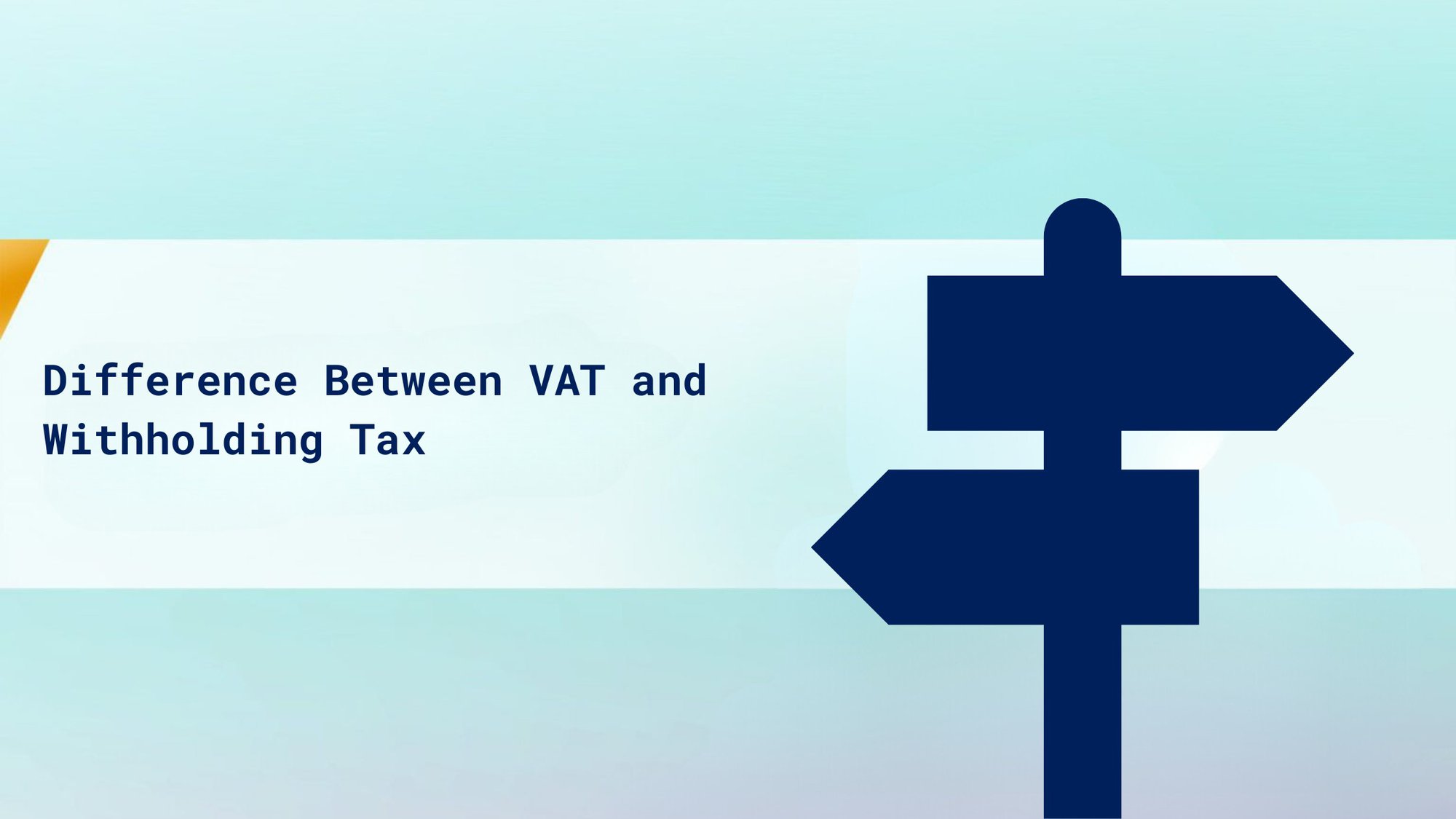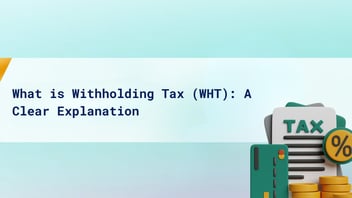
Difference Between VAT and Withholding Tax
Understanding the difference between a value-added tax (VAT) and withholding tax is critical for businesses and individuals. Confusion between these two tax types is common, since they both involve deducting amounts from payments. However, they differ significantly in how they function. Getting this distinction right can impact an organization's cash flow, record-keeping requirements, and overall tax liability.
This article will clarify what sets VAT and withholding taxes apart through concise definitions and comparisons of their key attributes. A strong grasp of these two tax types empowers taxpayers to implement accurate accounting treatment.
What is VAT?
Value-added tax (VAT) is a consumption tax that gets collected incrementally across every stage of the supply chain. This is from production to point of sale, whenever value is added to a good or service. It ultimately gets passed on in full to the consumer but does not become an actual cost for businesses that collect it.
The standard VAT rate in Nigeria is 7.5% as of 2020. When companies buy goods or services from their suppliers, they pay VAT on their purchases. Later, when those companies sell products to their own customers, they charge those buyers VAT.
The aim is to tax the value added by companies at each stage. For example, when a fruit supplier sells produce to a jam manufacturer, the manufacturer pays VAT on the total value of fruits purchased. Then when the manufacturer sells jam to stores, it charges VAT based on the value added in turning raw fruit into jam. Stores collect VAT from consumers on the full jam sales price when shoppers buy it. So the consumer bears the final VAT burden, while businesses in the supply chain facilitate transferring it to the government. VAT therefore brings in tax revenue to fund public services and infrastructure.
What is Withholding Tax?
Withholding tax, often abbreviated as WHT, is an income tax that is collected at the source of payment before funds are disbursed to the recipient. It requires the payer to deduct a designated percentage of the amount due to another party. Then, pay that amount directly to the tax authorities on the income earner's behalf.
For example, when a company pays out interest, dividends, rents, royalties, or certain services fees, it must withhold a flat 10% tax on those payments to Nigerian residents. The company deducts the 10% tax from the total payment amount and remits only the remaining 90% to the contracting party. This withheld tax is essentially a prepayment against the eventual income tax liability of the individual or company receiving the income.
Rather than relying on recipients to accurately report taxable income, tax agencies mandate that payers perform this upfront deduction. This makes it easier to identify tax liabilities and improves enforcement. Withholding tax is thus primarily a mechanism to increase efficiency of tax collection on investment income or cross-border transactions. It often applies to foreign investors or non-resident companies without permanent establishments in Nigeria.
While the withholding obligation falls on the payer transmitting funds, the actual tax burden belongs to the recipient on whose behalf income tax is prepaid in this manner. Payers must file returns documenting taxes withheld and amounts dispersed. Withholding does not represent a final tax figure. Recipients can offset advance withholding amounts against their overall income tax bill for the year. They may claim refunds if excess tax was withheld beyond actual liability. Or conversely, if insufficient tax was withheld relative to total tax obligation at year-end, recipients owe the balance directly to tax authorities.
Key Differences Between VAT and Withholding Tax
Conclusion
In summary, even though both VAT and withholding taxes involve deducting amounts from payments, they operate quite differently in terms of point of collection, responsible taxpayer, purpose and tax base. VAT incrementally pools government revenue across the entire supply chain until the final sale, with the burden ultimately falling on consumers.
Meanwhile, withholding taxes facilitate income tax collection directly from the original payer. Keeping these key differences straight will benefit companies in achieving tax compliance and individuals in understanding tax burdens. Please consult a tax expert for advice on specific situations.
Want more content like this? Sign Up on nairaCompare!




